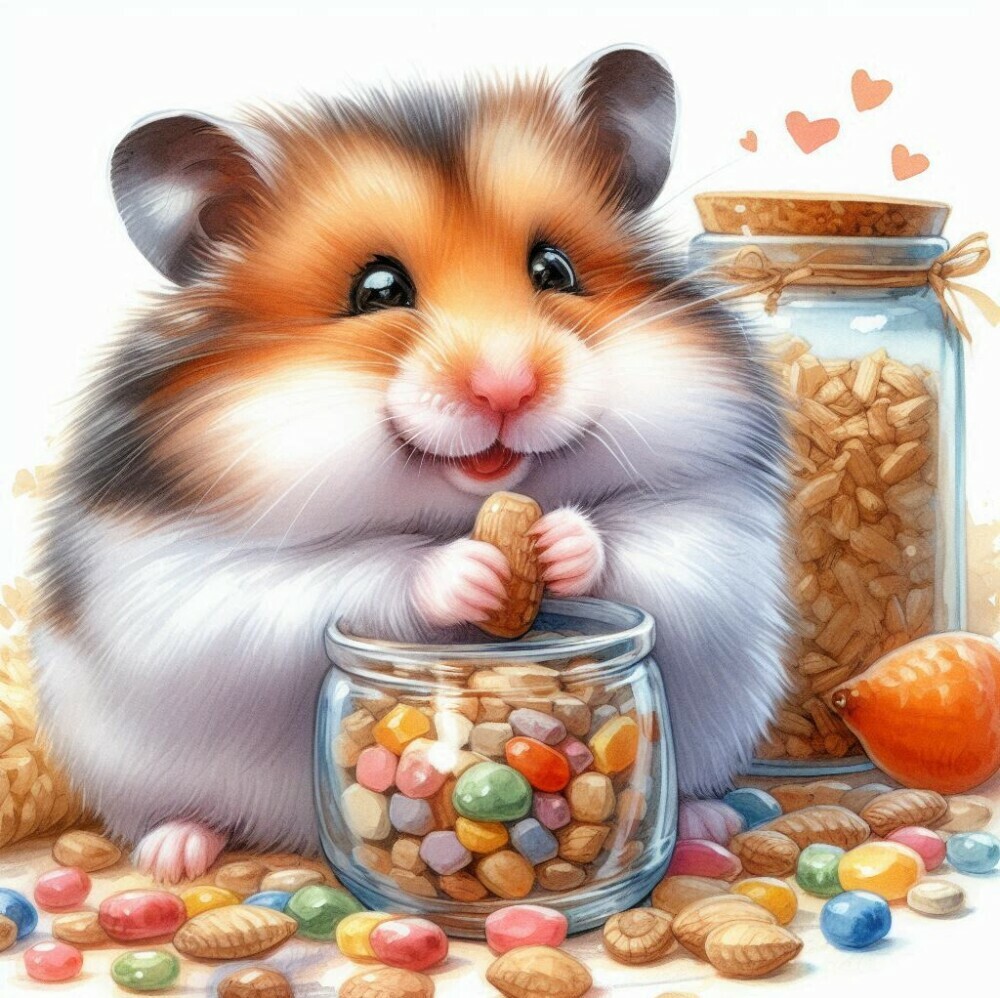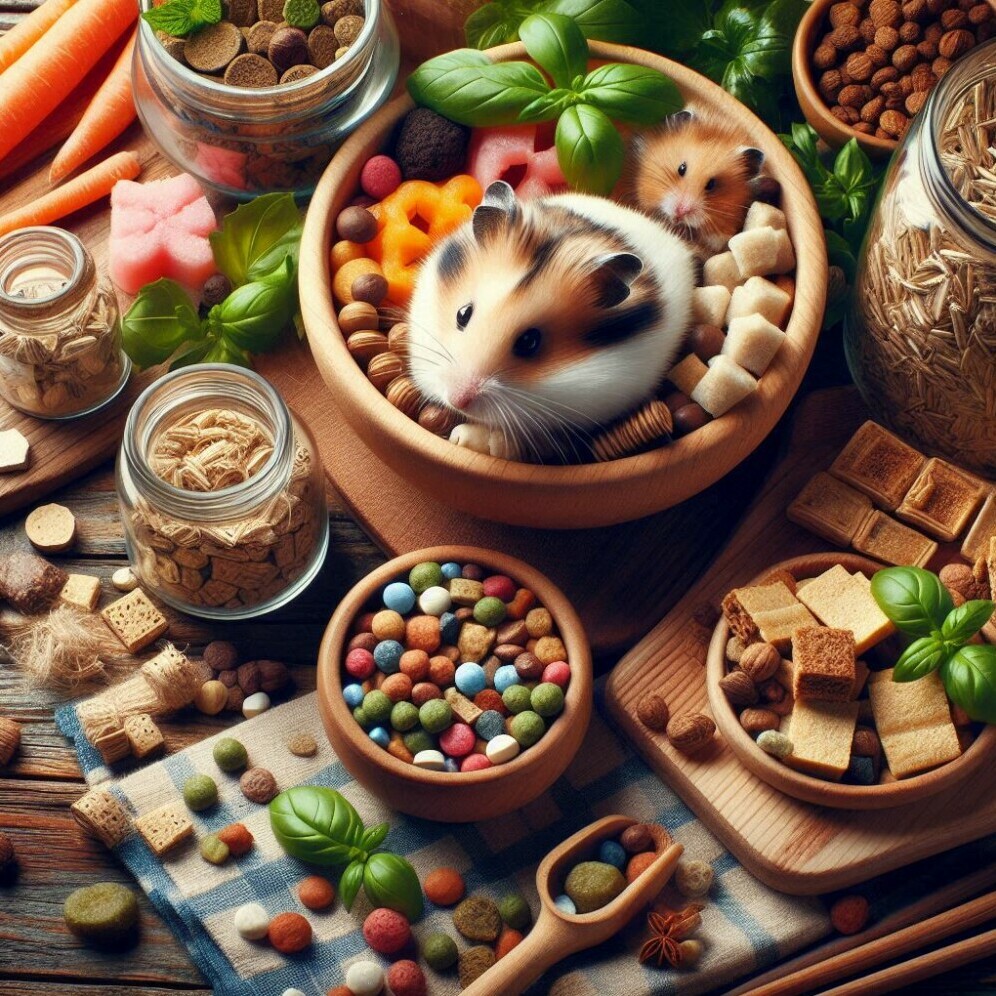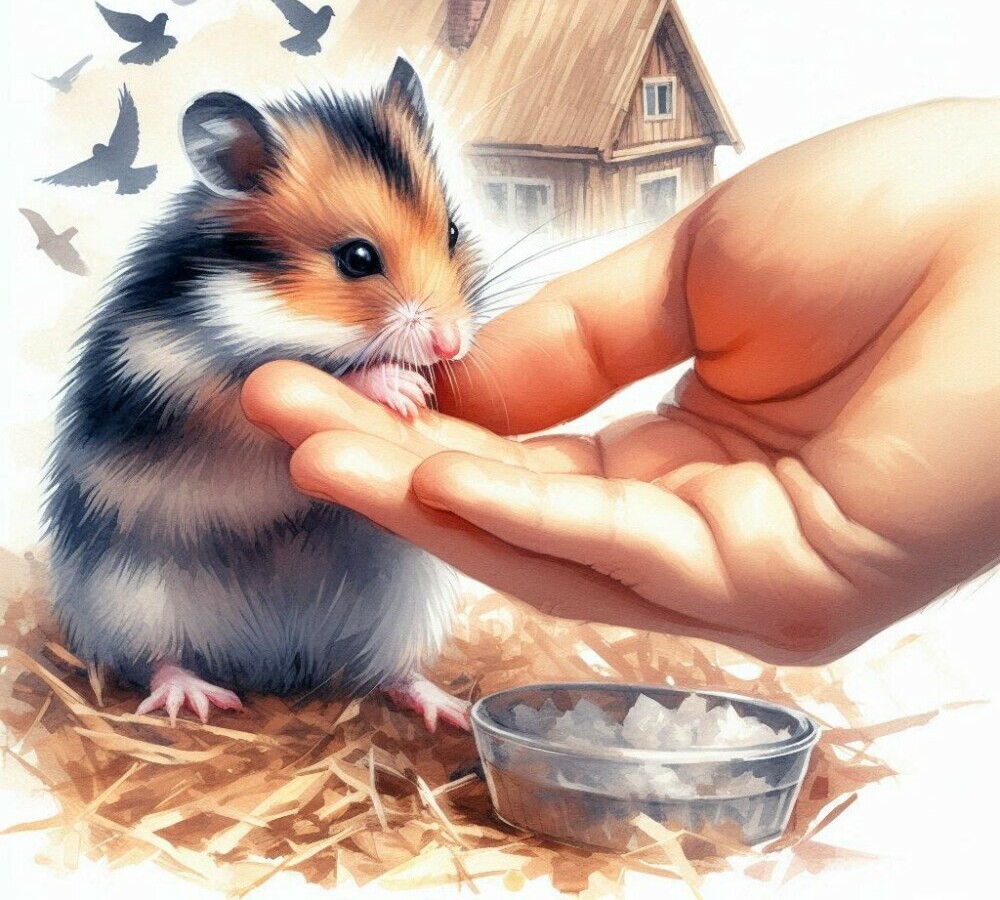Choosing the best hamster food isn’t just about keeping it happy; it’s about ensuring it stays healthy and lives a long life. The little critters have specific dietary needs that, if not met, can lead to various health issues. We all want our pets to be bouncing with energy, and proper nutrition plays a massive role in that.
Hamsters thrive on a balanced diet that includes a mix of proteins, fats, and carbohydrates, along with essential vitamins and minerals. The right food can make a world of difference in their overall well-being. When you feed them correctly, you’re helping them maintain a healthy weight, shiny fur, and good energy levels. It’s amazing how much a well-balanced diet impacts their little bodies.
If your hamster’s diet lacks essential nutrients, you might notice changes in its behavior, coat, or even its activity levels. Just like us, when they don’t eat well, they don’t feel well. So, understanding what to feed them and why it’s important is the first step in being a responsible pet owner.
In this article, we’ll guide you through the best food options available, from commercial pellets to fresh fruits and homemade mixes. You’ll also get tips on what to avoid to ensure your furry friend stays in top shape. Ready to dive in? Let’s get to it!

Comprehensive Guide to the Best Hamster Food Options
### Commercial Pellets and Mixes
Hamster pellets are a popular choice because they’re designed to provide everything your hamster needs in one package. These pellets contain the right balance of vitamins, minerals, and other nutrients, making them a solid foundation for a healthy diet. They also prevent your hamster from selectively eating only their favorite bits, ensuring they get a well-rounded intake.
Seed mixes can be a bit more complex. While they offer variety and are usually more exciting for your hamster, they can lead to selective feeding. Your pet might munch on the tastiest seeds and leave the rest, which can result in an unbalanced diet. If you go with seed mixes, just keep an eye on what’s being eaten and what’s left behind.
### Fresh Fruits and Vegetables
Adding some fresh produce to your hamster’s diet can be a great way to introduce necessary vitamins and minerals. Safe options include apples (without seeds), carrots, broccoli, and cucumbers. Just remember, moderation is key. Too much fresh food can upset their little stomachs.
On the flip side, some foods should be off-limits. Avoid citrus fruits, onions, garlic, and raw potatoes, as these can be harmful to your hamster. Always wash fresh produce thoroughly to remove any pesticides or chemicals that could be dangerous.
### Proteins and Treats
Hamsters need a bit of protein in their diet, and you can provide this through occasional treats. Boiled eggs, cooked chicken, and mealworms are great sources of protein. Keep these treats sparse to avoid throwing off their dietary balance.
Healthy treats can also include bits of whole grain bread and unsweetened cereals. Store-bought hamster treats can be fun, but always check the ingredients to make sure they don’t contain added sugars or harmful additives.
### Homemade Mixes
Creating your own hamster mix can be rewarding and allows for greater control over what your hamster is eating. A good homemade mix might include a variety of seeds, grains, and dried vegetables. The key here is balance – make sure your mix provides all the necessary nutrients and stays free from harmful additives.

Key Nutritional Requirements for Hamsters
Hamsters have pretty specific dietary needs that, when met, keep these little guys healthy and happy. At the core of their diet, you’ll find proteins, fats, and carbohydrates, each one playing a vital role.
Proteins are essential for growth and repair. Just like us, hamsters need protein to build and maintain muscles and other tissues. Aim for about 16-20% of their diet to come from proteins. Sources include high-quality commercial pellets, small portions of boiled egg, or even mealworms as an occasional treat.
Fats provide energy and help in the absorption of certain vitamins. You want fats to make up about 5-7% of their diet. Healthy sources of fat include seeds and certain grains found in commercial mixes. Be wary of too much fatty stuff, though; it can lead to obesity and other health problems.
Carbohydrates are the main energy source for hamsters. Look for complex carbohydrates found in grains and vegetables. These should form a large part of their diet, keeping them active and energetic. Avoid simple sugars as these can mess with their blood sugar levels and overall health.
Vitamins and minerals are crucial for the overall health of your pet. A varied diet that includes fresh fruits and vegetables usually covers these needs. Commercial pellets often contain fortified vitamins and minerals to ensure they’re getting everything they need. Occasionally, a tiny bit of multivitamin supplement can be added, but this is generally not necessary if their diet is well-rounded.
Keeping an eye on their food and regularly checking their health will ensure your hamster lives its best life. Balanced nutrition not only promotes longevity but also keeps them spry and happy throughout their lives.

Tips and Recommendations for Feeding Your Hamster
Feeding your hamster might seem straightforward, but a few guidelines can make a big difference in their health and happiness. Mixing up their diet while sticking to nutritional essentials is key.
Start with a consistent feeding schedule. Hamsters are creatures of habit, so feeding them at the same time each day helps establish a routine. Most hamsters do well with a daily feeding in the evening, as they’re more active during the night.
When introducing new foods, whether commercial or fresh, do so gradually. Abrupt changes can upset their stomachs and cause digestive issues. Add small amounts and observe how they react before making it a regular part of their diet.
Always keep fresh water available. A clean water bottle with a sipper tube works best to prevent spills and contamination. Check the water level daily and refresh it to ensure it’s clean.
Be cautious with treats. While everyone loves to spoil their pets, too many treats can lead to nutritional imbalances. Stick to the healthy options mentioned earlier and give them sparingly.
Pay attention to portion sizes. Overfeeding can lead to obesity and related health issues. A tablespoon of pellets or mix daily, along with some fresh produce, usually suffices.
Dispose of uneaten fresh food daily to prevent it from spoiling in the cage. Rotting food can lead to health problems and attract pests.
Look out for signs of a healthy diet in your hamster – a shiny coat, bright eyes, and active behavior generally indicate they’re getting the nutrients they need. Conversely, lethargy, dull fur, and weight changes might signal a need for dietary adjustments.
To avoid common mistakes, steer clear of foods that are toxic to hamsters, overfeeding, and failing to provide a balanced diet. By focusing on variety and balance, you’re ensuring your hamster’s well-being.
Explore trusted brands and products available in the market. Some top recommended brands are Oxbow, Kaytee, and Higgins. These brands offer balanced and nutritionally rich options tailored for hamsters.

6 replies on “What Is The Best Hamster Food”
Wow this article is very informative about hamster food! Honestly I didn’t know that hamster food could be so diversified. I don’t know why, but I’ve always thought that hamsters only ate herbs. So I was very surprised to see that they could eat animal protein as well. My best friend used to have a hamster and she gave him pellets. But unfortunately I don’t remember the name of the brand she used!
Hi angelce903,
Thank you for your kind words! I’m glad you found the article informative. It’s a common misconception that hamsters only eat herbs, but in reality, they are omnivores and can benefit from a varied diet that includes both plant-based foods and animal protein.
In addition to a base diet of high-quality pellets, which provide essential nutrients, you can supplement your hamster’s diet with fresh vegetables, fruits, grains, seeds, and occasional animal proteins like mealworms or boiled eggs. This variety helps ensure they receive a balanced diet and stay healthy.
As for the pellets, there are many reputable brands available, such as Oxbow, Kaytee, and Higgins. Each of these offers nutritionally balanced options designed specifically for hamsters. When selecting a brand, look for pellets that are free from added sugars, artificial colors, and fillers to provide the best nutrition for your furry friend.
If you have any more questions about hamster care, feel free to ask!
Wow! I didn’t realise choosing the right food for a hamster is so involved and important for its health and happiness. They reakky do need a balanced diet with proteins, fats, and carbs, plus essential vitamins and minerals. I suppose like humans a healthy diet helps keep your hamster active, with a shiny coat and good energy levels. I didn’t realise they could eat animal protein and need fruit and vehgetables in moderation. Thanks for the informative article
Thank you so much Lyn, for your kind words! I’m glad you found the article informative and helpful. Indeed, just like humans, a balanced diet is crucial for a hamster’s health and well-being. Ensuring they get the right mix of proteins, fats, and carbohydrates, along with essential vitamins and minerals, helps keep them active and vibrant.
Including a small amount of animal protein can be beneficial for them, as it mirrors their natural diet. Fruits and vegetables should definitely be given in moderation to avoid any digestive issues and to prevent them from getting too much sugar.
Providing them with a variety of nutritious foods will keep them happy and healthy, ensuring they have a shiny coat and plenty of energy to explore and play. If you have any more questions or need further guidance, feel free to reach out. Happy hamster caring!
Hi there
Your is a thorough and informative guide for hamster owners seeking to provide optimal nutrition for their pets. The detailed analysis of various food options, including commercial hamster mixes, fresh vegetables, and occasional treats, is well-researched and easy to understand. The inclusion of a balanced diet chart is particularly helpful for new pet owners. However, it would be beneficial to include more specific brand recommendations for commercial foods.
What are your thoughts on incorporating user reviews or expert opinions on specific hamster food brands to further enhance the article?
Hi Troy,
Thank you for your kind words and valuable feedback! I’m delighted to hear that you found the guide thorough and informative.
Reviews can highlight practical aspects such as palatability, ingrediënt quality, and any observed health benefits or issues, while expert opinions can offer a more technical evaluation based on nutritional content and overall suitability for hamsters.
I’m indeed planning to look into gathering a diverse range of reviews and expert opinions to include into my content. This will surely provide a more comprehensive resource for the readers I think.
Thank you again for your suggestion, and if you have any specific brands you’d like to see reviewed or any other ideas, feel free to share!
Best regards,